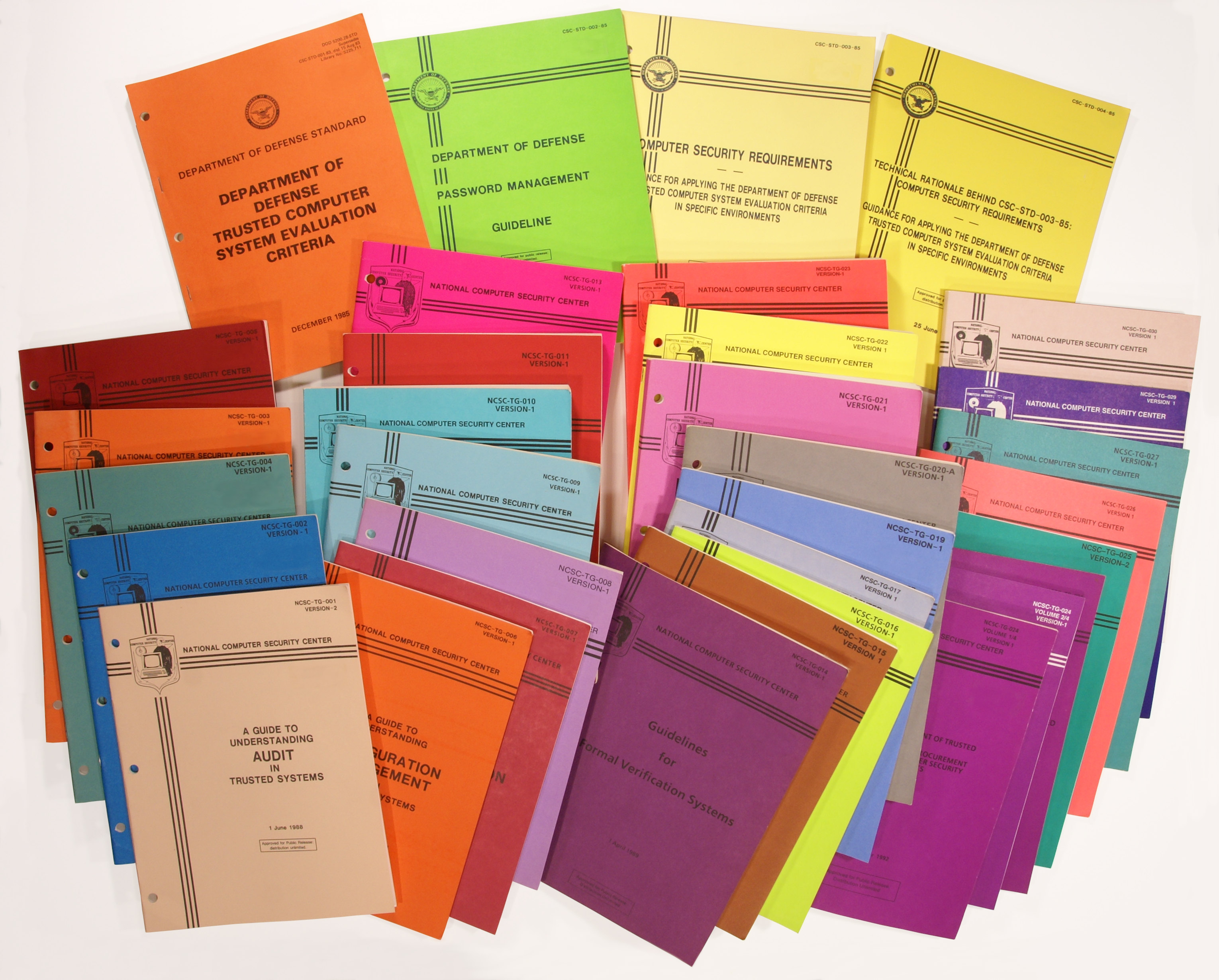|
Protection Profile
A Protection Profile (PP) is a document used as part of the certification process according to ISO/IEC 15408 and the Common Criteria (CC). As the generic form of a Security Target (ST), it is typically created by a user or user community and provides an implementation independent specification of information assurance security requirements. A PP is a combination of threats, security objectives, assumptions, security functional requirements (SFRs), security assurance requirements (SARs) and rationales. A PP specifies generic security evaluation criteria to substantiate vendors' claims of a given family of information system products. Among others, it typically specifies the Evaluation Assurance Level (EAL), a number 1 through 7, indicating the depth and rigor of the security evaluation, usually in the form of supporting documentation and testing, that a product meets the security requirements specified in the PP. The National Institute of Standards and Technology (NIST) and the Na ... [...More Info...] [...Related Items...] OR: [Wikipedia] [Google] [Baidu] |
Common Criteria
The Common Criteria for Information Technology Security Evaluation (referred to as Common Criteria or CC) is an international standard (ISO/IEC 15408) for computer security certification. It is currently in version 3.1 revision 5. Common Criteria is a framework in which computer system users can ''specify'' their security ''functional'' and ''assurance'' requirements (SFRs and SARs respectively) in a Security Target (ST), and may be taken from Protection Profiles (PPs). Vendors can then ''implement '' or make claims about the security attributes of their products, and testing laboratories can ''evaluate'' the products to determine if they actually meet the claims. In other words, Common Criteria provides assurance that the process of specification, implementation and evaluation of a computer security product has been conducted in a rigorous and standard and repeatable manner at a level that is commensurate with the target environment for use. Common Criteria maintains a list of ce ... [...More Info...] [...Related Items...] OR: [Wikipedia] [Google] [Baidu] |
Security Target
Common Criteria for Information Technology Security Evaluation, version 3.1 Part 1 (called CC 3.1 or CC)Common Criteria Portal - http://www.commoncriteriaportal.org/cc/ defines the Security Target (ST) as an "implementation-dependent statement of security needs for a specific identified Target of Evaluation (TOE)". In other words, the ST defines boundary and specifies the details of the TOE. In a product evaluation process according to the CC the ST document is provided by the vendor of the product. An ST defines information assurance security and functional requirements for the given information system product, which is called the Target of Evaluation (TOE). An ST is a complete and rigorous description of a security problem in terms of TOE description, threats, assumptions, security objectives, security functional requirements (SFRs), security assurance requirements (SARs), and rationales. The SARs are typically given as a number 1 through 7 called Evaluation Assurance Level (EAL ... [...More Info...] [...Related Items...] OR: [Wikipedia] [Google] [Baidu] |
Information Assurance
Information assurance (IA) is the practice of assuring information and managing risks related to the use, processing, storage, and transmission of information. Information assurance includes protection of the integrity, availability, authenticity, non-repudiation and confidentiality of user data. IA encompasses not only digital protections but also physical techniques. These protections apply to data in transit, both physical and electronic forms, as well as data at rest . IA is best thought of as a superset of information security (i.e. umbrella term), and as the business outcome of information risk management. Overview Information assurance (IA) is the process of processing, storing, and transmitting the right information to the right people at the right time. IA relates to the business level and strategic risk management of information and related systems, rather than the creation and application of security controls. IA is used to benefit business through the use of information ... [...More Info...] [...Related Items...] OR: [Wikipedia] [Google] [Baidu] |
Security Functional Requirements
Security is protection from, or resilience against, potential harm (or other unwanted Coercion, coercive change) caused by others, by restraining the freedom of others to act. Beneficiaries (technically referents) of security may be of persons and social groups, objects and institutions, ecosystems or any other entity or phenomenon vulnerable to unwanted change. Security mostly refers to protection from hostile forces, but it has a wide range of other senses: for example, as the absence of harm (e.g. freedom from want); as the presence of an essential good (e.g. food security); as Resilience (organizational), resilience against potential damage or harm (e.g. secure foundations); as secrecy (e.g. a Telephone tapping, secure telephone line); as containment (e.g. a secure room or Prison cell, cell); and as a state of mind (e.g. emotional security). The term is also used to refer to acts and systems whose purpose may be to provide security (security companies, security forces, secur ... [...More Info...] [...Related Items...] OR: [Wikipedia] [Google] [Baidu] |
Evaluation Assurance Level
The Evaluation Assurance Level (EAL1 through EAL7) of an IT product or system is a numerical grade assigned following the completion of a Common Criteria security evaluation, an international standard in effect since 1999. The increasing assurance levels reflect added assurance requirements that must be met to achieve Common Criteria certification. The intent of the higher levels is to provide higher confidence that the system's principal security features are reliably implemented. The EAL level does not measure the security of the system itself, it simply states at what level the system was tested. To achieve a particular EAL, the computer system must meet specific ''assurance requirements''. Most of these requirements involve design documentation, design analysis, functional testing, or penetration testing. The higher EALs involve more detailed documentation, analysis, and testing than the lower ones. Achieving a higher EAL certification generally costs more money and takes more ... [...More Info...] [...Related Items...] OR: [Wikipedia] [Google] [Baidu] |
NIST
The National Institute of Standards and Technology (NIST) is an agency of the United States Department of Commerce whose mission is to promote American innovation and industrial competitiveness. NIST's activities are organized into physical science laboratory programs that include nanoscale science and technology, engineering, information technology, neutron research, material measurement, and physical measurement. From 1901 to 1988, the agency was named the National Bureau of Standards. History Background The Articles of Confederation, ratified by the colonies in 1781, provided: The United States in Congress assembled shall also have the sole and exclusive right and power of regulating the alloy and value of coin struck by their own authority, or by that of the respective states—fixing the standards of weights and measures throughout the United States. Article 1, section 8, of the Constitution of the United States, ratified in 1789, granted these powers to the new Congre ... [...More Info...] [...Related Items...] OR: [Wikipedia] [Google] [Baidu] |
United States
The United States of America (U.S.A. or USA), commonly known as the United States (U.S. or US) or America, is a country primarily located in North America. It consists of 50 states, a federal district, five major unincorporated territories, nine Minor Outlying Islands, and 326 Indian reservations. The United States is also in free association with three Pacific Island sovereign states: the Federated States of Micronesia, the Marshall Islands, and the Republic of Palau. It is the world's third-largest country by both land and total area. It shares land borders with Canada to its north and with Mexico to its south and has maritime borders with the Bahamas, Cuba, Russia, and other nations. With a population of over 333 million, it is the most populous country in the Americas and the third most populous in the world. The national capital of the United States is Washington, D.C. and its most populous city and principal financial center is New York City. Paleo-Americ ... [...More Info...] [...Related Items...] OR: [Wikipedia] [Google] [Baidu] |
Government Of The United States
The federal government of the United States (U.S. federal government or U.S. government) is the national government of the United States, a federal republic located primarily in North America, composed of 50 states, a city within a federal district (the city of Washington in the District of Columbia, where most of the federal government is based), five major self-governing territories and several island possessions. The federal government, sometimes simply referred to as Washington, is composed of three distinct branches: legislative, executive, and judicial, whose powers are vested by the U.S. Constitution in the Congress, the president and the federal courts, respectively. The powers and duties of these branches are further defined by acts of Congress, including the creation of executive departments and courts inferior to the Supreme Court. Naming The full name of the republic is "United States of America". No other name appears in the Constitution, and this i ... [...More Info...] [...Related Items...] OR: [Wikipedia] [Google] [Baidu] |
Rainbow Series
The Rainbow Series (sometimes known as the Rainbow Books) is a series of computer security standards and guidelines published by the United States government in the 1980s and 1990s. They were originally published by the U.S. Department of Defense Computer Security Center, and then by the National Computer Security Center. Objective These standards describe a process of evaluation for trusted systems. In some cases, U.S. government entities (as well as private firms) would require formal validation of computer technology using this process as part of their procurement criteria. Many of these standards have influenced, and have been superseded by, the Common Criteria. The books have nicknames based on the color of its cover. For example, the Trusted Computer System Evaluation Criteria was referred to as "The Orange Book." In the book entitled ''Applied Cryptography'', security expert Bruce Schneier states of NCSC-TG-021 that he "can't even begin to describe the color of hecove ... [...More Info...] [...Related Items...] OR: [Wikipedia] [Google] [Baidu] |
Unintended Consequence
In the social sciences, unintended consequences (sometimes unanticipated consequences or unforeseen consequences) are outcomes of a purposeful action that are not intended or foreseen. The term was popularised in the twentieth century by American sociologist Robert K. Merton and expanded by economist Thomas Sowell and psychologist Stuart Vyse.Robert K. Merton, Versatile Sociologist and Father of the Focus Group, Dies at 92 Michael T. Kaufman, '''' Unintended consequences can be grouped into three types: * ''Unexpected benefit'': ... [...More Info...] [...Related Items...] OR: [Wikipedia] [Google] [Baidu] |




